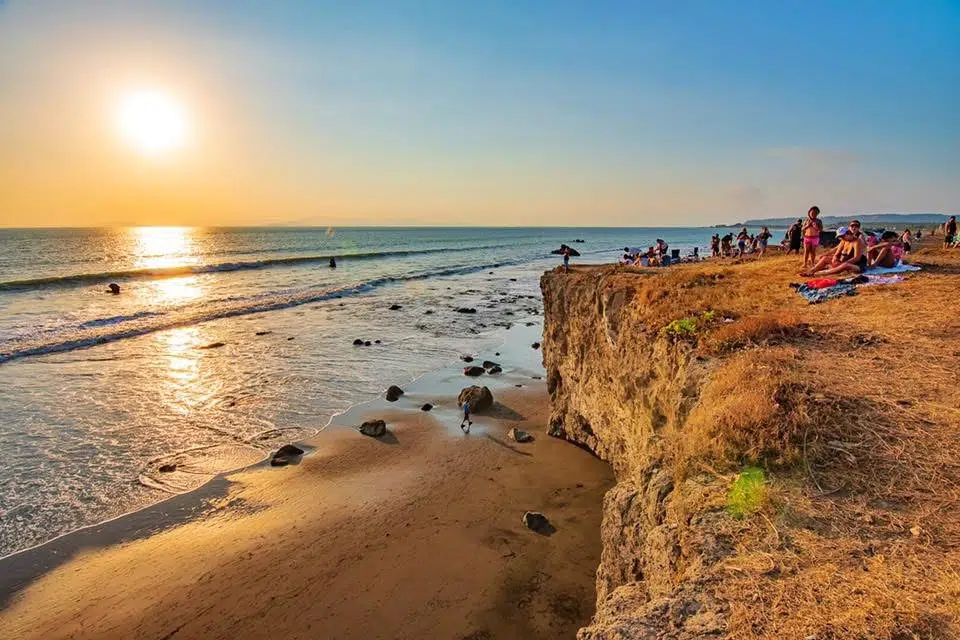QCOSTARICA — The future of the land donated by Lorne Ross and Agnes May in February 1975, intended for environmental conservation in Santa Ana, is in the eye of the storm.
On the one hand, the neighbors and relatives of the donor, supported by the Partido Liberal Progresista (PLP), seek to preserve the land in its natural state, maintaining its environmental value intact, while the pro-government legislator Pilar Cisneros proposes the construction of a recreational water park that would generate employment in the canton.
The controversy has reached Cuesta de Moras (Legislative Assembly), where an initiative promoted by Catalina Obregón, former Santa Ana councilor and representative of some Santa Ana neighbors, is being discussed so that the administration of these lands be transferred to the Municipality through a bill.
– Advertisement –
However, Cisneros is opposed to this and points out that the land is owned by the Ministry of Environment and Energy (Minae) and could be used to build a recreation center.
“The water park would be a tribute to the vital liquid, promoting its respect and appreciation. The benefits would be enormous for the canton of Santa Ana in terms of employment,” said the legislator.
The land (the big empty lot east of PriceSmart) is comprised of 52 hectares (128 acres), crossed by National Route 27, which were donated to the State by Lorne Ross so that, after his death, they would be used for environmental conservation.
However, in 1993, the administration was granted to the Fundación Pro Zoológicos (Fundazoo), who managed the area for 30 years. Currently, the agreement has ended and the future of these lands remains uncertain.
The project promoted by the residents has already passed the legislative committee process and could be discussed in the Plenary in the next few days, although its approval is still in doubt, because it received more than 60 motions from the ruling party.
“We do not know in depth what Mrs. Pilar proposes for these lands. What is clear is that the residents want the original purpose of the donation to be maintained: conservation, recreation, and the benefit of the community,” said Obregón.
– Advertisement –
This story is marked by a series of events:
- 1975: Donation of the land by Lorne Ross and Agnes May
- 1993: The administration was granted to the Fundación Pro Zoológicos (Fundazoo) for 30 years
- 2022: The concession expires and Minae affirms that the contract will not be renewed
- 2024: The bill is presented for the Municipality of Santa Ana to administer it
The property has 227 species of fauna, 11 species in danger of extinction or threatened and 193 species of flora, among them:
- Yellow-naped parrot
- Tuberculous gecko
- Craugastor ranoides frog
- Golden-eyed tree frog
- Boa constrictor
- White-eared finch
- White-fronted parrot
- Double-collared plover
- Orange-billed toucanet
- Two- and three-toed sloths
Divided
The future of the land donated by Lorne Ross and Agnes May to the State in 1975 divides the community’s residents and some deputies.
With the approval of the bill, the Municipality of Santa Ana would allocate in its annual budget the necessary items for the management of the park, based on the principle of sustainability.
– Advertisement –
In addition, it would be empowered to establish agreements with public or private entities, national or international.
Likewise, the animals in captivity at the Conservation Center would be moved to safe sites, in accordance with current legislation.
Local businessmen are also attentive to the future of the property, concerned about the impact that any project could have on traffic.
“It is difficult to make value judgments at this time, as we do not know in detail what is intended to be done, nor the volume of visitors expected. What is clear is that, if something of great magnitude is developed, traffic will be affected, both in the area and on Route 27, which is already congested at certain times. The State does not have the resources to maintain these lands, and a clear example is what happens with the La Sabana Metropolitan Park, which is managed with difficulties,” said Fernando Peñaranda, a real estate businessman from the Costa Rican Construction Company S.A.
The area not only stands out for its rich biodiversity in flora and fauna, but also for the presence of important aquifers.
A technical report from the Sistema Nacional de Áreas de Conservación de 2023 (National System of Conservation Areas) underlines that the “urban natural park reflects a social fabric that groups community interests and motivations around the site, which reinforces its cultural value for the community.”
For her part, biologist Melissa Rodríguez highlighted that the area is part of a biological corridor that extends from the Cerro de Escazú to the Virilla River.
“In a place like Santa Ana, which is growing rapidly, it is essential to protect this green lung. This site should not become just another ecotourism destination, but a refuge for nature,” she said.
– Advertisement –
Source link
Rico


